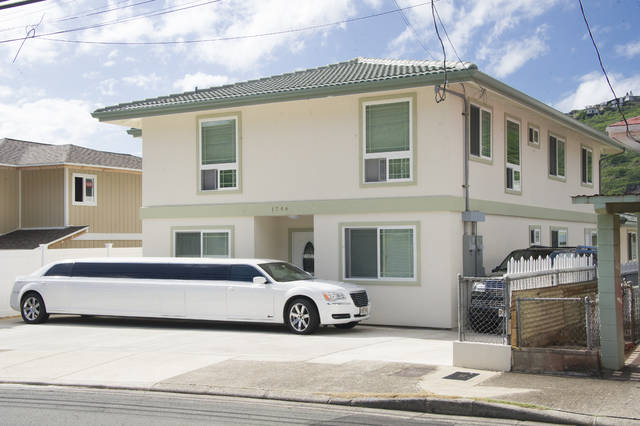Intrusive, hulking monster houses are wedging their way into some of Honolulu’s older residential areas. The uglification trend comes with concerns about potential troubles ranging from clogged traffic flow to stressed infrastructure.
In some cases, property owners are replacing single-family homes with significantly larger structures to accommodate multiple generations of an extended family — complete with double-digit bedroom counts. In other cases, neighbors suspect jumbo-sized houses are being used for unauthorized residential or vacation rentals, adult care homes, dormitories and illegal commercial operations.
Whatever their uses, and despite conspicuous clashes with neighborhood character, many of these dwellings technically meet existing zoning and building codes. So, it’s now up to the City Council to move quickly to curb the trend, which is prodded by the Oahu’s monstrous affordable housing shortage.
A few months ago, the Council’s fix-it focus was the city Department of Planning and Permitting (DPP) practice of approving even suspicious home construction and conversion plans because its bureaucratic hands are tied by regulations that do not set limits on the number of bedrooms or wet bars (a serving counter fitted with a sink and running water) allowed in residential districts.
Honolulu Star-Advertiser reporter Gordon Y.K. Pang’s two-part report Opens in a new tab on the monster-house issue noted that by early October the city had so far this year considered nearly two dozen building permit applications for houses of eight bedrooms or more, with more than half approved. The largest among them: an 18-bedroom house in Kalihi described as a proposed two-story, single-family dwelling with a wet bar.
A resolution, as first introduced by Councilman Trevor Ozawa, called for limiting both bedrooms and wet bars. But DPP Acting Director Kathy Sokugawa later convinced the Council Zoning and Permitting Committee that instead limiting floor area would be a easier to enforce. That makes sense as a more tangible fix. Room use, of course, is slippery because it can be reconfigured shortly before a DPP inspector knocks at the front door.
Resolution 17- 276, which is expected to go before the Council for a final vote on Wednesday, would limit the floor-to-area ratio (also known as density) of new residential buildings, require more parking for larger houses and require builders to obtain a conditional use permit from the Council if proposed residential structures are larger than a certain size. Support for the proposal is needed to help preserve long-standing neighborhoods dotting the city from Kalihi and Liliha to Pearl City, Kapalama, Maunalani Heights, Palolo and Kaimuki.
Most newer subdivisions, such as those in Mililani, Ewa and Kapolei, are shielded from monster-house creep by comparatively tight restrictions on home expansions and ironclad community association covenants.
In addition to putting in place more rigorous codes, the Council must also make stepped-up enforcement possible. The city now employs one dozen residential building enforcement inspectors — also tasked with pursuing complaints about illegal bed-and-breakfast and other vacation units. With more housing rules on the books, more inspectors would be needed to flag suspected scofflaws.
What’s more, the Council should pick up and approve deferred Bill 94, which would impose a moratorium on larger houses until the DPP can chart a viable long-term solution to this problem.
STATEWIDE, it’s projected that Hawaii will need 22,500 rental housing units over the next decade. Yet the pent-up demand for housing on Oahu is being addressed by a marketplace adding 2,000 to 3,000 housing units to the supply annually, with most priced in the luxury bracket. The listless pace is, of course, spurring on the oversized housing trend.
Even so, sentiment that monsters should be tolerated because of the shortage must be rejected. Ozawa has rightly noted: “This is not smart development. It’s not well planned. Most of these are being planned haphazardly with complete disregard for infrastructure needs,” such as sewer capacity and potential flooding due to paving over yards, which funnels rain runoff to streams and elsewhere.
Honolulu’s land-use ordinance allows one- and two-family detached dwelling units on lots in residential areas. Those neighborhoods should not have to put up with multi-family structures better suited for an apartment district, or a new zoning class.
City law limits property owners to housing no more than five unrelated people on a property, and no more than three if the property owner’s own family lives there. And the size of a house or houses is limited to half the lot. While sorting out family ties can be tricky, a structure failing to meet code is a clear-cut matter.
Rather than continuing to provide incentives for offenders to make structural amends, such as a reduced fine, the city should insist on swift correction or a tear-down of the structure. Tough tactics are needed to slay this monster.

